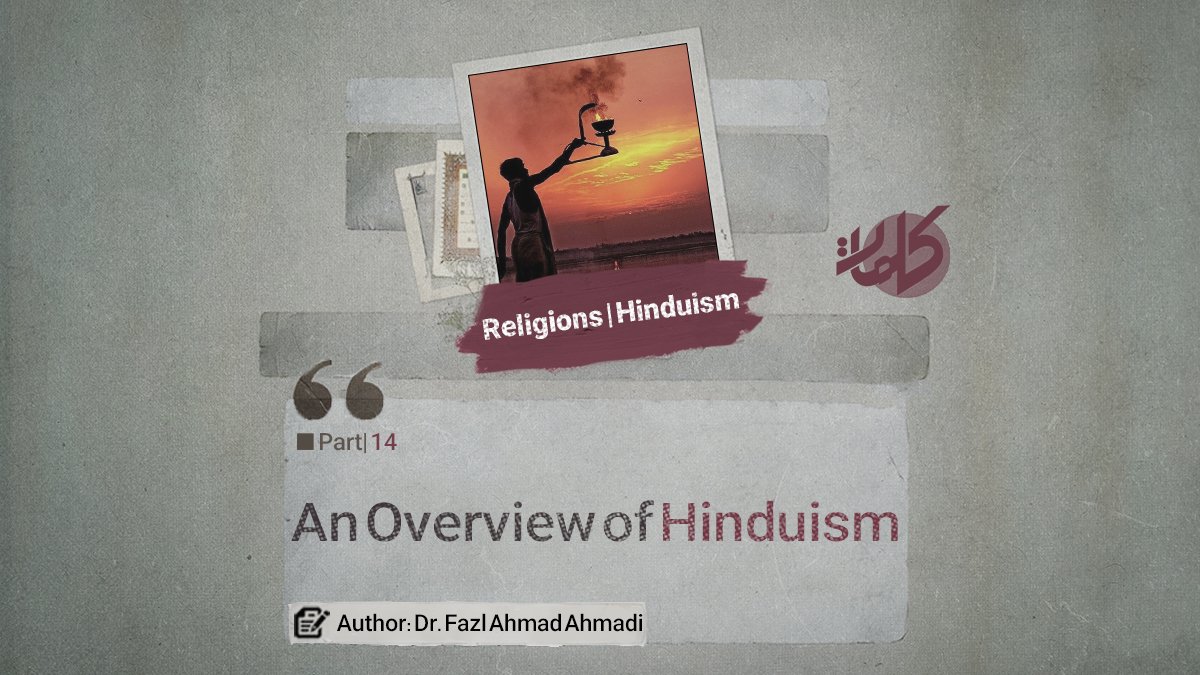
Author: Dr. Fazl Ahmad Ahmadi
An Overview of Hinduism (Part 14)
Life Stages
The philosophy of distinguishing life stages is not unique to Hinduism; rather, this concept has been explored in many religions and philosophies, with various opinions presented. In Hinduism, each class has specific and obligatory duties, and throughout life there is a guiding principle called “Dharma,” which consists of four “Ashramas” or stages, where special responsibilities pertain to individuals at each stage.
According to Hindu beliefs, the first stage of life is “Brahmacharya,” or the stage of acquiring knowledge. This stage is rooted in the Brahmin class, where parents sought to teach their children the “Vidya,” or the discipline of ceremonies. The three threads representing “Paranava” remind us of three points: “M” symbolizes the absolute; “Madha” and “Shardaha” serve as the three principles guiding acquisition of knowledge. A significant Vedic hymn instructed the children of Brahman on how to worship the sun, encouraging them to draw inspiration from its light and rays.
In ancient Hindu society, “students” or “shishyas” accompanied their teachers in the “Gurukula,” or school, typically situated away from urban settings. Dignitaries and commoners, the wealthy and the impoverished, princes and peasants all learned and lived together. Life there included not only religious matters but also service to the “guru” and his family, practicing yoga, and studying sacred texts, which were essential to arts and sciences. This simple life encouraged celibacy and cultivated a tolerant approach to self-discipline, emphasizing self-esteem and purity of existence.
The “guru,” as the teacher and sage of that time, advised his students to speak only the truth, always remember “Dharma,” serve their elders, and honor the teachings of the Vedas. He taught that parents, teachers, and guests are divine beings deserving respect and reverence; disrespecting them is considered a sin that warrants punishment.
The second stage of life, from the Hindu perspective, is “Grihastha,” or family life. This stage begins when the student returns from the Gurukula and marries, assuming family responsibilities as a wise, mature individual. Marriage in Hinduism is not merely a bond or contract between a man and a woman; it is viewed as a sacred phase of spiritual growth. In Hinduism, a husband does not perform religious ceremonies without his wife by his side, reflecting the belief that men and women are incomplete without marriage, akin to the goddess “Parvati,” who is an integral part of the god Shiva.
The third life stage, “Vanaprastha,” means middle age. This stage arises as a person’s children mature and can manage their own lives. “Vanaprastha” literally indicates those who abandon family life for solitude and self-cultivation in the forest. In contemporary interpretation, it signifies the release from desires and worldly ties, engaging instead in philosophical contemplation and meditation.
The fourth stage in Hinduism is “Sannyasa,” the stage of asceticism, which signifies departure from ordinary life. Reaching this stage is challenging; few individuals progress from “Vanaprastha” to “Sannyasa.” Once one attains “Sannyasa,” they renounce material desires and needs, accept no money, and live on alms, fruits, and resources that do not belong to any individual. Such individuals transcend societal rules and are known as “Jivanmukta,” meaning those who have liberated themselves from everyday life and no longer rely on anything external (Smith, 2007: 90-95).
Conclusion
In conclusion, several key points can be highlighted:
Western orientalists have categorized Hinduism into three distinct periods: the Vedic period, the Brahmanical period, and the Hindu period (Sutras and Scholastic). The Vedic period saw the rise of the Brahmin class and the spread of Aryan culture in India. The “Vedas” and “Upanishads,” two of Hinduism’s sacred texts, emerged during this time.
The Brahmanical period coincided with the rise of Buddhism, Jainism, and Vaishnavism, leading to a reaction against Brahmin dominance in society. This resulted in the development of new rational methods that challenged the teachings of the Vedas and the Upanishads.
The Sutra period, which began in the 2nd century AD, involved the writing of philosophical material in verse and short chapter form. The Scholastic period, the final philosophical era in India, continued until the 15th century AD.
2. In Hinduism, the caste system does not equate to social division and class struggle as seen in the West following the French and Industrial revolutions. The superiority of one caste over another in the Indian system is not determined by economic factors; one may observe impoverished Brahmins alongside wealthy Shudras. The purpose of the Indian religious system is to establish a hierarchy based on the inherent realities of individuals.
3. Hinduism may seem an intricate and confusing forest due to its multitude of gods and various idols, leading many to mistakenly label Hindus as idolaters. Despite the diversity of its forms and perceived complexities, Hinduism retains a unified and enduring essence.
4. The concept of monotheism or unity in Hinduism differs significantly from that commonly understood in Islam. Thus, although there is a notion of unity among Hindus, it does not align with the Islamic understanding of monotheism.
Finally, the classification of life into four stages is a distinctive feature of Hinduism, highlighting the real value of social life.
Continues…


